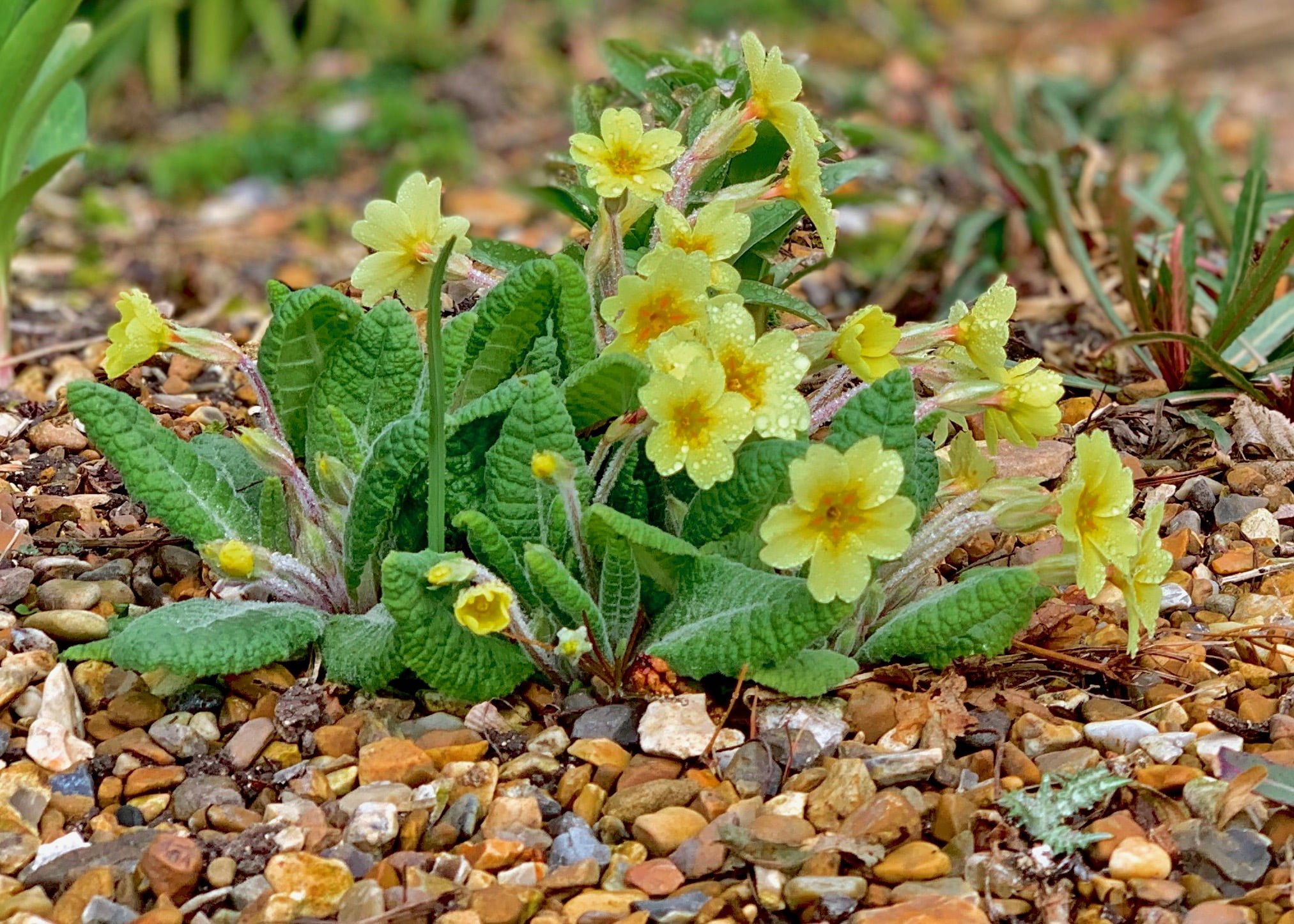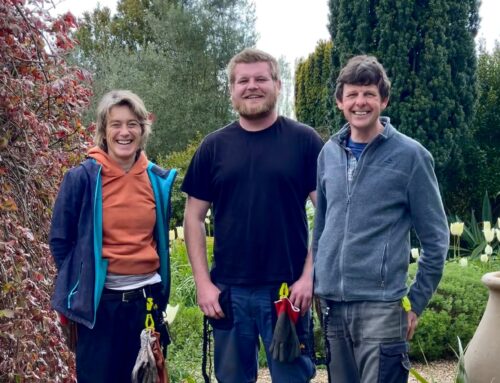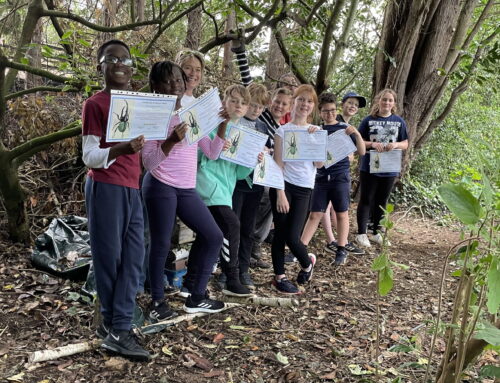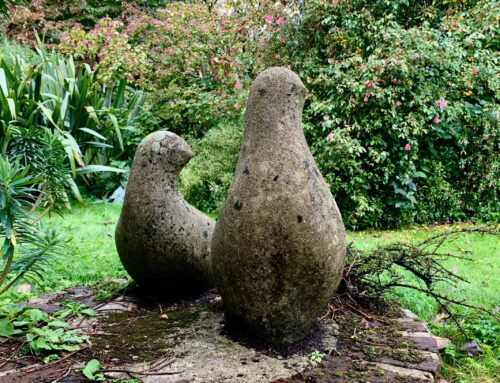Primroses are among the many plants that self-sow in the gravel.
Each year it starts with the cyclamen, the winter aconites, and a week or two later, the snowdrops: The first heartening signs that despite heavy winds, long hours of darkness, and bone-aching cold, gentle spring will inevitably return.
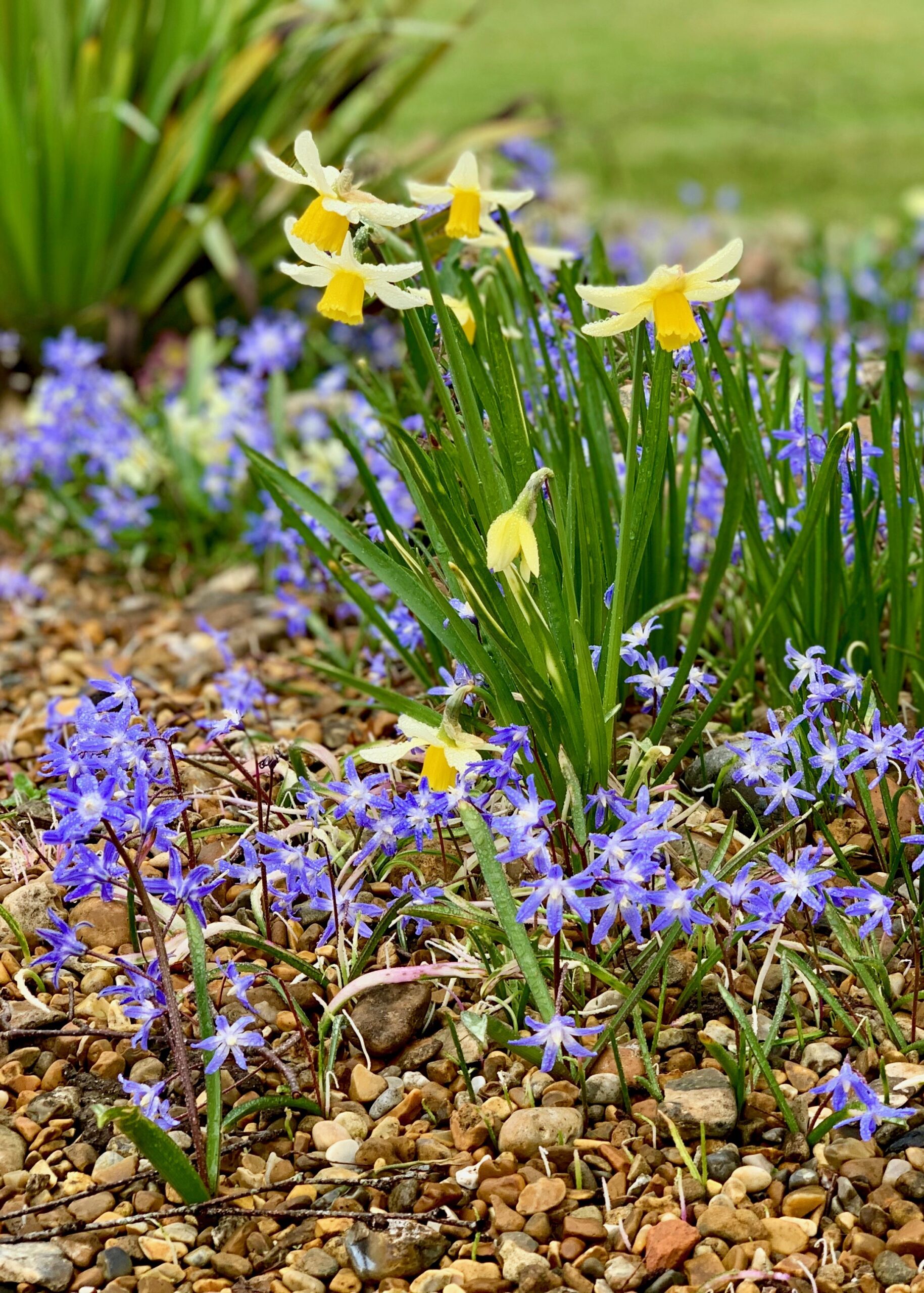
Gravel is a good medium for delicate spring bulbs.
This year at Denmans has been no different in sequence, but it has been much more beautiful than previous years. There just seems to be more of everything.
What people find surprising when they visit the garden is that our spring bulbs and plants grow as comfortably and beautifully in the gravel beds and paths as they do in the shrubberies, borders, and swathes of unmown grass. Each medium has its own special beauty and
effect, but somehow, the gravel is especially lovely and unusual.
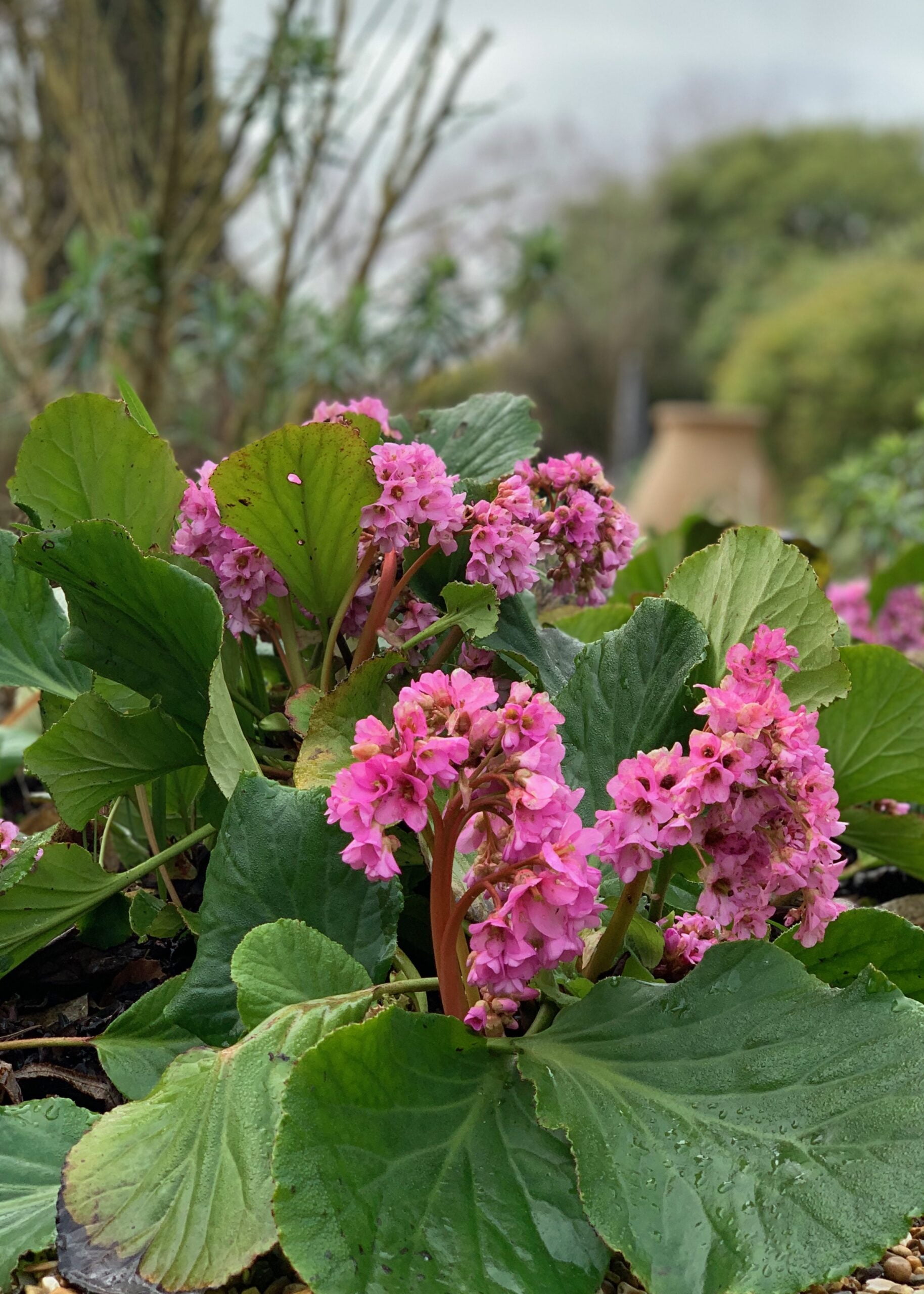
Bergenias bloom sporadically through winter but are showiest just now, and their broad leaves provide winter texture.
While the term ‘gravel garden’ for many conjures an image of succulents and spikey plants that thrive on windswept beaches or in desert conditions, our gravel gardens are populated with a broad mix of perennials, shrubs, and bulbs from bergenias, stachys, primroses, narcissus, and anemones to kniphofia, columbine, yuccas, and thistles.
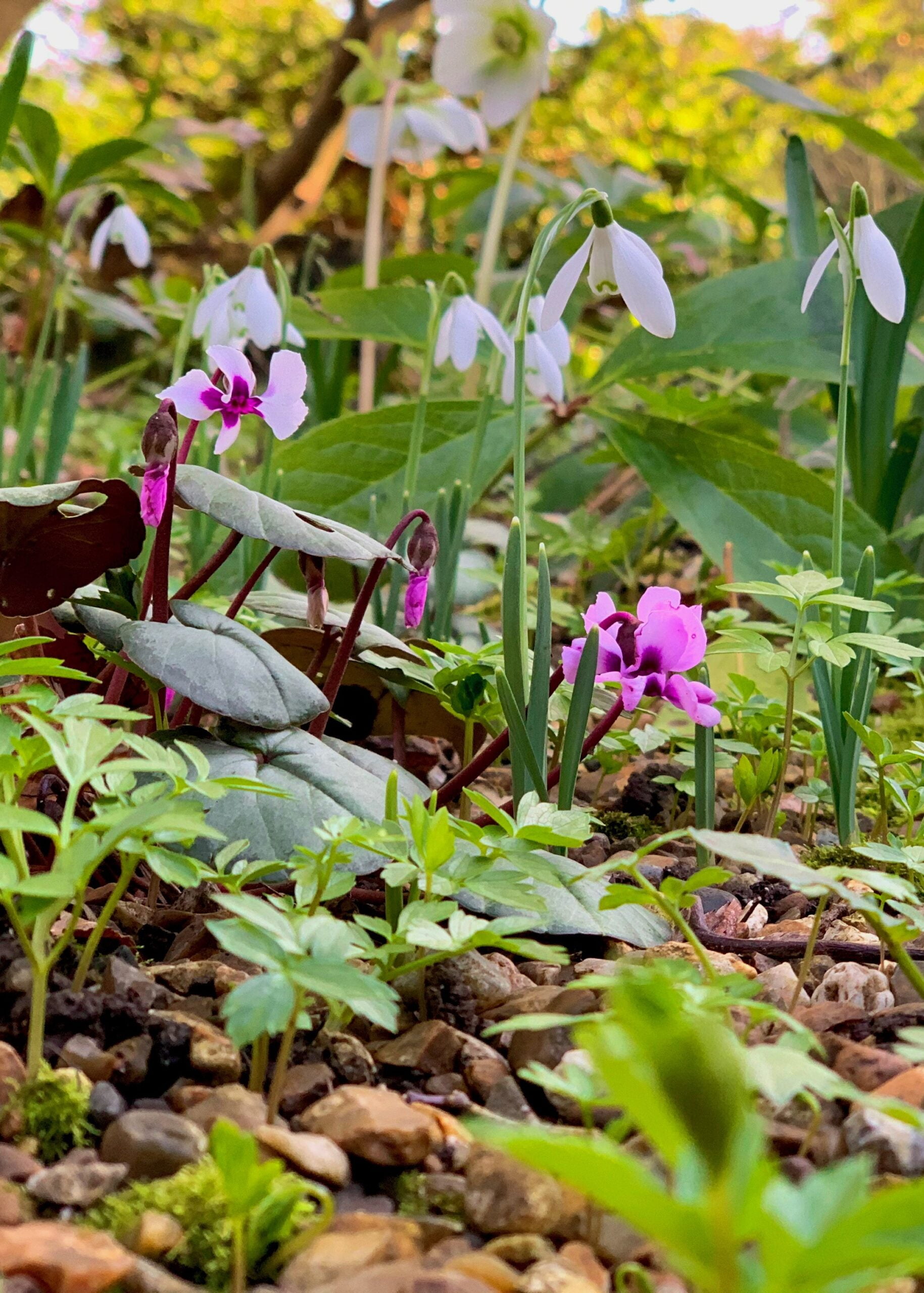
Last spring these cyclamen and snowdrops began blooming for the first time in years and they were back in force this spring.
This is the second year that snow drops and cyclamen (even a few vestigial leucojum!) have come up in the gravel at the top of the Nut Walk, but not because we planted them. Much to our amazement and delight, they appeared last year initially after overgrown shrubs had been cut back letting light into the area for the first time in years. Not a fan of snowdrops, we doubt John Brookes MBE planted them. We attribute them instead to the garden’s founder, plantswoman Joyce Robinson, who started the gravel gardens here in 1970. We believe they have simply been dormant for years, just waiting for a chance to bloom again.
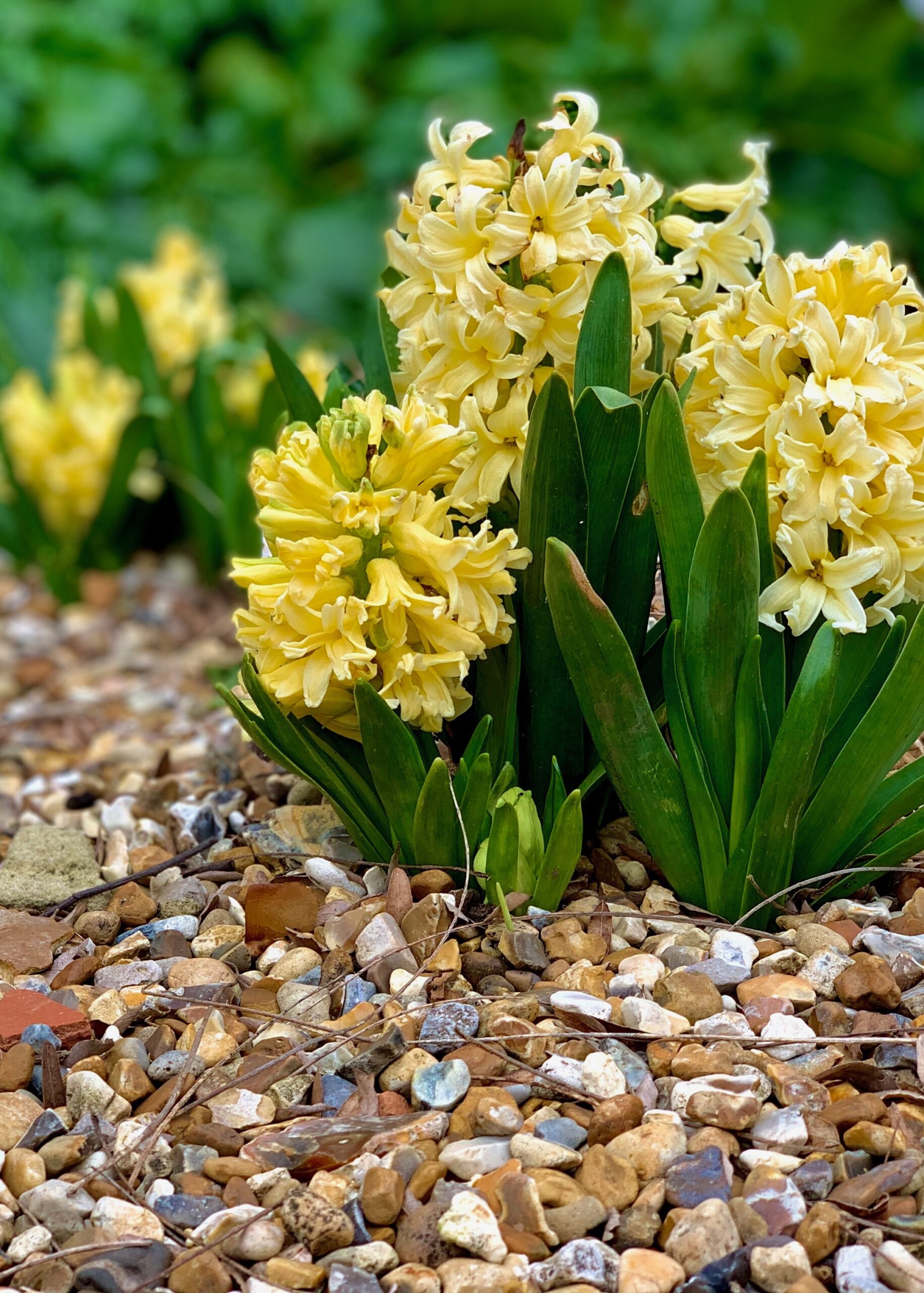
These lemon yellow hyacinths are back for the second year.
We have planted other late winter and spring bulbs and perennials in the gravel over past few years, though. Two years ago it was yellow hyacinths near the greenhouses and they have come up beautifully again this year, their pale yellow blossoms complemented by the beiges and greys in the shingle that we use, dredged from the sea. We have also planted anemone blanda and scillas, though there are lots of scillas blooming this year that we suspect may have been planted by John or Mrs. Robinson but have lain dormant until now.
Emerging perennials, also planted in gravel, give the bulbs and cyclamens a more robust background, filling in around them with the portent of their blossoms. Before long, there will also be tulips and camassias…but more about them in the months to come!
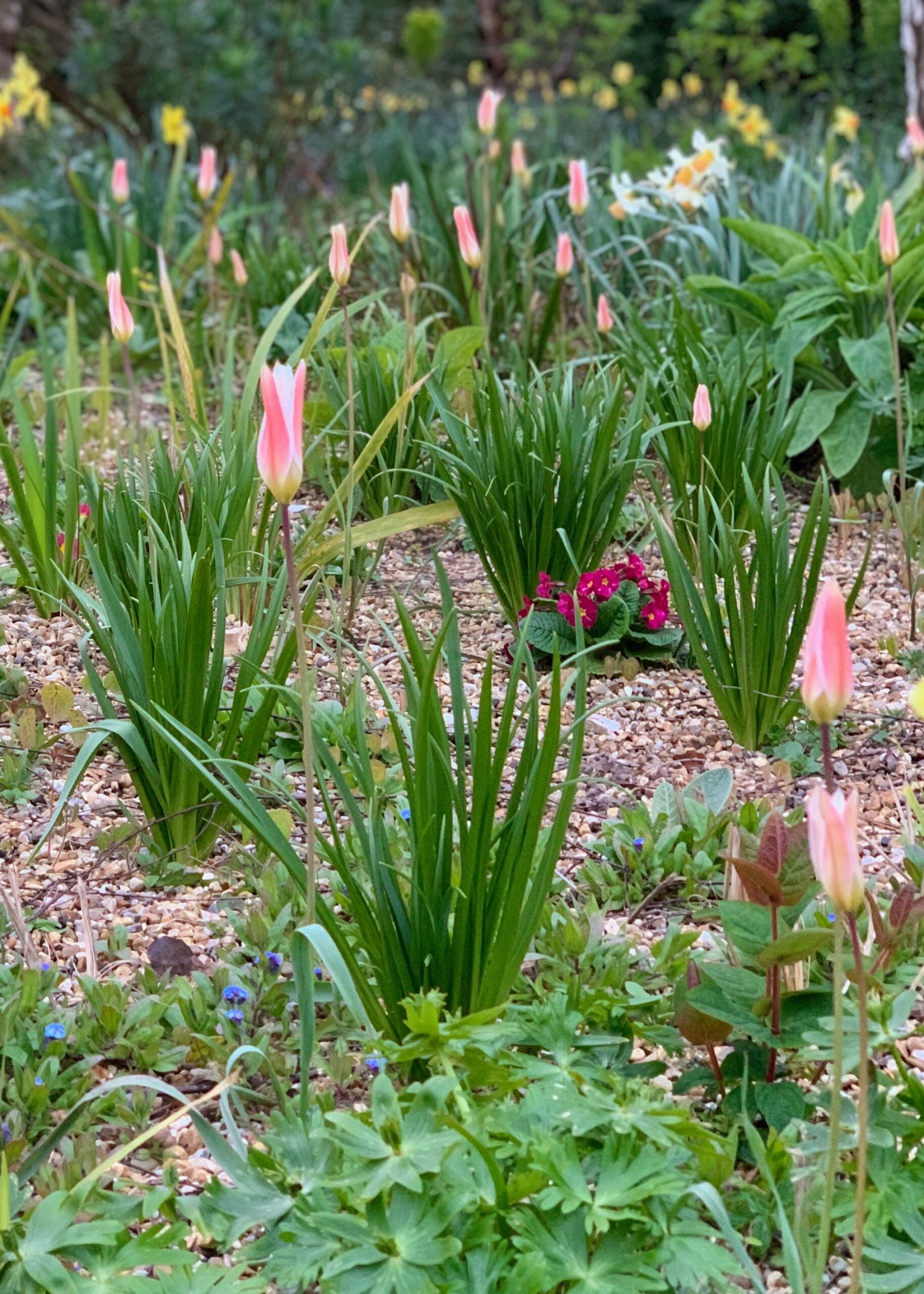
We are looking forward to tulips, camassias, and anemones later this spring.
Remember, if you are starting a gravel garden, your soil, and climate need to be taken into account before you plant, so do your research and make a plan. The soil here at the foot of the South Downs is well-drained and relatively alkaline, so we plant with that in mind – and let it all self-sow for the ‘scattery look’ both John and Mrs. Robinson loved.
For more about gravel gardens, please see the April edition of the RHS The Garden magazine.

